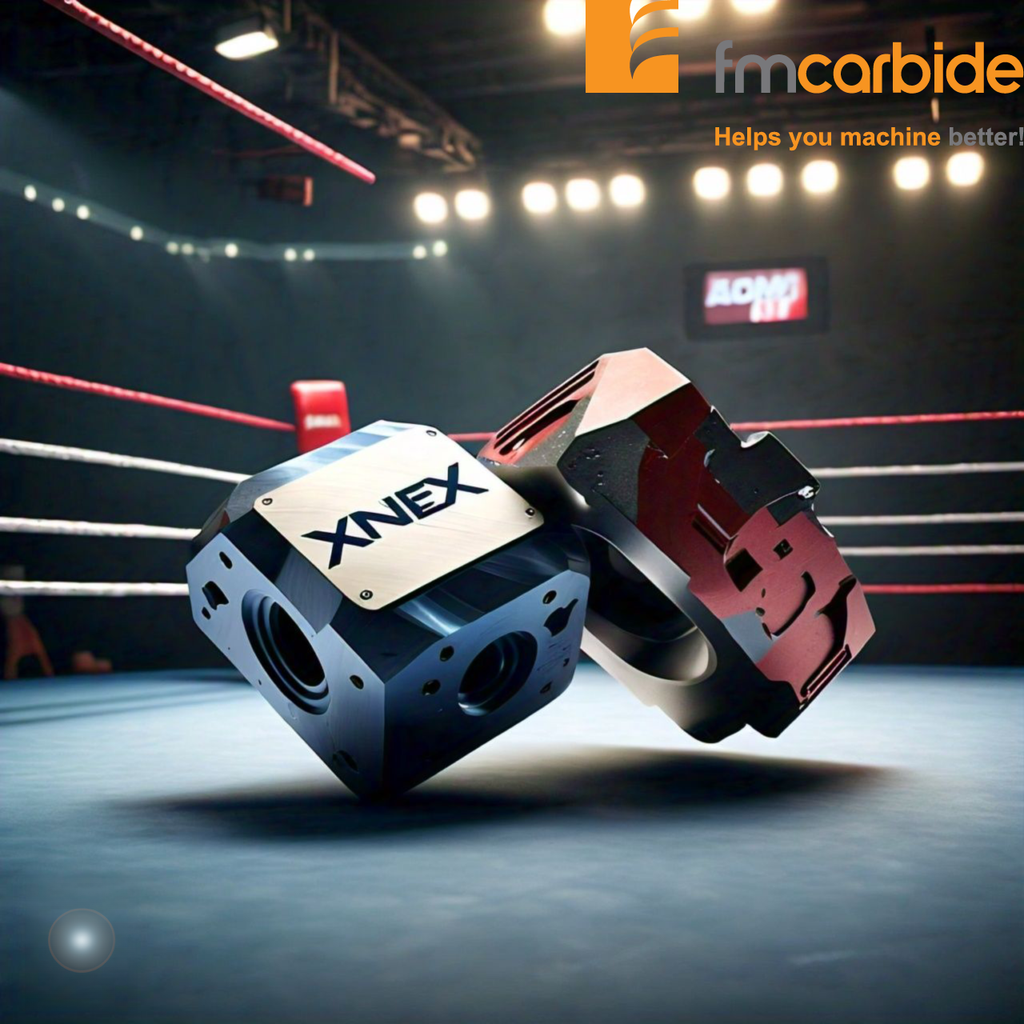
Milling operations form the backbone of many manufacturing processes. The right choice of carbide inserts can have a huge impact on your productivity, surface finish quality, and overall machining costs. While many types of inserts exist, this blog post focuses on two popular choices: AOMT and XNEX. Let's break down their strengths and weaknesses.
AOMT Inserts
-
Advantages:
- Versatility: AOMT inserts come in various shapes and sizes and cover a wide range of applications, including facing, shoulder milling, and even some turning operations.
- Robustness: Feature a four-cutting-edge design, providing good value and extended tool life.
- Cost-effective: Often seen as a budget-friendly option due to widespread availability.
-
Disadvantages:
- Slightly lower feed rates: The geometry of AOMT may necessitate slightly lower feed rates when compared to more specialized insert types.
- Chip evacuation: Not always optimal in deep pocketing operations, chip management should be monitored.
XNEX Inserts
-
Advantages:
- High feed rates: Designed to support aggressive machining with high feed rates, boosting productivity.
- Excellent chip control: The curved cutting edges and advanced geometries provide excellent chip formation and reduce chip jamming.
- A variety of specialized grades: XNEX inserts are offered in diverse grades with coatings tailored for specific materials like steel, stainless steel, or cast iron.
-
Disadvantages:
- Cost: XNEX inserts often come at a premium price compared to AOMT inserts. However, Sharp Metal's prices today are highly competitive, so it's worth checking them out.
- Less universal: Generally more tailored to specific milling applications versus the broader use cases for AOMT.
So, Which One Is Right for You?
The best choice depends on your specific needs:
- General-purpose machining: AOMT inserts excel in their versatility and cost-effectiveness for many everyday milling tasks.
- High-performance, aggressive machining: XNEX inserts shine in situations where maximum metal removal rates and optimized chip evacuation are essential.
- Specialized materials: If you work with tough materials or require exceptional surface finishes, the specialized grades of XNEX might be worth the investment.

Additional Considerations
Beyond the insert itself, remember these factors when making a decision:
- Machine tool capabilities: Can your machine handles higher feed rates possible with XNEX inserts?
- Workpiece material: The material being cut plays a major role in insert choice.
- Budget: The cost-benefit ratio should always be considered.
In Conclusion
Both AOMT and XNEX carbide inserts are valuable tools. By understanding their strengths and weaknesses, you can select the best option for your workshop's needs, ensuring optimized performance and cost-effectiveness for your milling jobs


Comments (0)